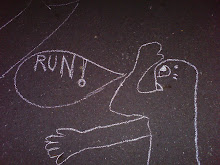


The punk subculture emerged in the United States, the United Kingdom, and Australia in the mid-1970s. Exactly which region originated punk has long been a major controversy within the movement.
Early punk had an abundance of antecedents and influences, and
Jon Savage has described the subculture as a "
bricolage" of almost every previous youth culture that existed in the West since the Second World War "stuck together with safety pins".
Various
philosophical,
political, and
artistic movements influenced the subculture. In particular, punk drew inspiration from several strains of
modern art. Various writers, books, and literary movements were important to the formation of the punk aesthetic. Punk rock has a variety of musical origins both within the
rock and roll genre and beyond.
IDEOLOGY: Although punks are frequently categorized as having
left-wing or
progressive views, punk politics cover the entire
political spectrum. Punk-related ideologies are mostly concerned with individual freedom and
anti-establishment views. Common punk viewpoints include
anti-authoritarianism, a
DIY ethic, non-
conformity,
direct action and not
selling out. Other notable trends in punk politics include
nihilism,
anarchism,
socialism,
anti-militarism,
anti-capitalism,
anti-racism, anti-
sexism,
anti-nationalism, anti-
homophobia,
environmentalism,
vegetarianism,
veganism and
animal rights.
FASHION:
Punks seek to outrage others with the highly theatrical use of clothing, hairstyles, cosmetics, tattoos, jewelry and body modification. Early punk fashion adapted everyday objects for aesthetic effect: ripped clothing was held together by safety pins or wrapped with tape; ordinary clothing was customized by embellishing it with marker or adorning it with paint; a black bin liner became a dress, shirt or skirt; safety pins and razor blades were used as jewelry. Also popular have been leather, rubber, and vinyl clothing that the general public associates with transgressive sexual practices like bondage and S&M.
Punk fashion in the early 1980s
Some punks wear tight "drainpipe" jeans, plaid/tartan trousers, kilts or skirts, T-shirts, leather jackets (which are often decorated with painted band logos, pins and buttons, and metal studs or spikes), and footwear such as Converse sneakers, skate shoes, brothel creepers, or Dr. Martens boots. Some early punks occasionally wore clothes displaying a Nazi swastika for shock-value, but most contemporary punks are staunchly anti-racist and are more likely to wear a crossed-out swastika symbol. Some punks cut their hair into Mohawks or other dramatic shapes, style it to stand in spikes, and color it with vibrant, unnatural hues.
Some punks are anti-fashion, arguing that punk should be defined by music or ideology. This is most common in the post-1980s US hardcore punk scene, where members of the subculture often dressed in plain T-shirts and jeans, rather than the more elaborate outfits and spiked, dyed hair of their British counterparts.
MUSIC: The punk subculture is centered around listening to recordings or live concerts of a loud, aggressive genre of rock music called punk rock, usually shortened to punk. While most punk rock uses the distorted guitars and noisy drumming that is derived from 1960s garage rock and 1970s pub rock, some punk bands incorporate elements from other subgenres, such as metal (e.g., mid-1980s-era Discharge) or folk rock (Billy Bragg). Different punk subcultures often distinguish themselves by having a unique style of punk rock, although not every style of punk rock has its own associated subculture. Most punk rock songs are short, have simple and somewhat basic arrangements using relatively few chords, and they use lyrics that express punk values and ideologies ranging from the nihilism of the Sex Pistols' "No Future" to the anti-drug message of Minor Threat's "Straight Edge". Punk rock is usually played in small bands rather than by solo artists. Punk bands usually consist of a singer, one or two overdriven electric guitars, an electric bass player, and a drummer (the singer may be one of the musicians). In some bands, the band members may do backup vocals, but these typically consist of shouted slogans, choruses, or football(soccer)-style chants, rather than the arranged harmony vocals of pop bands.
WATCH PUNK DOCUMENTARY 1976
The above video link features largely around the punk rock music scene and contains
interesting interviews with the Sex Pistols.
“Undermine their pompous authority, reject their moral standards, make anarchy and disorder your trademarks. Cause as much chaos and disruption as possible but don’t let them take you ALIVE.”
Sid Vicious quote
http://www.last.fm/music/Sex+Pistols











